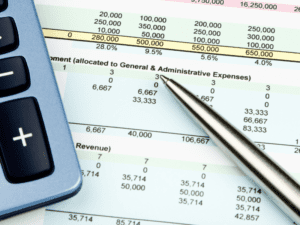Podcast: Play in new window | Download
On The Property Management Show, we recently had a conversation with Ray Hespen, the CEO and co-founder of Property Meld.
We always find ourselves talking to him a lot – and about a lot. This episode is no different. We covered so much ground that we split the interview into two episodes.
Here’s part one – where we talk about what maintenance analytics is, why it’s important, and how it can help a property management business hold onto business and grow.
Property Meld and Maintenance Analytics
 In total, this is the seventh time that Ray joined the property management show, which means there’s a lot to learn from him. In this conversation, we want to know what his team has been so busy doing this year.
In total, this is the seventh time that Ray joined the property management show, which means there’s a lot to learn from him. In this conversation, we want to know what his team has been so busy doing this year.
It turns out, they’ve been combing through maintenance analytics.
Ray says he’s thrilled that the industry continues to evolve into something more sophisticated, especially around maintenance. Property
managers are looking for more information to make data-driven decisions around maintenance, rather than relying on a gut feel.
So, the questions Property Meld has been focusing on are:
- How do we make decision based on quantitative or numerically-driven data?
- How can a property management company use that information to move the needle as an organization?
Property Meld has collected data on hundreds of thousands of maintenance issues and units. That data is used to transform how people run the maintenance part of their property management business.
Maintenance analytics is a term that sounds technical. It’s also called maintenance insights. This is simply following the data and learning from it.
Basically, maintenance analytics or insights is this concept of allowing any operator to, at a granular level, understand how they’re doing on maintenance. The maintenance analytics will help you understand how to think about maintenance, and to understand what happens before the next things happen.
This provides visibility into a maintenance operation.
- How is your communication?
- How is your scheduling efficiency?
- How is your maintenance staffing?
- Are you prioritizing preventative maintenance?
Some of the information that Ray and the team at Property Meld have been gathering will be ready to share, soon. It will help property management companies really get into the weeds of how they’re doing with maintenance.
If there’s a specific KPI you’re trying to move, you might learn that you need to engage your vendors better. Maybe you need to work on efficiency with your maintenance coordinators. The deep dive will move you into a pointed plan of attack, and that’s going to improve your business.
Think about your bank account.
What are you spending all your money on? By examining the withdrawals and the expenditures, you might see your rent payments and your gas and then you’ll also see a lot of brunch. You know that you need to reduce the brunch budget if you want to save money.
That kind of visibility is essential when you’re making spending decisions. Ray’s maintenance analytics can bring that visibility into the maintenance world for property managers.
As a business owner, you need to make data-driven decisions.
Other industries have figured this out, and it’s exciting that property management finally gets it.
Lagging Indicators and Leading Indicators
What kind of data do you need?
First, you need to know what’s going on. Then, you need to be diagnostic, and then predictive, and then prescriptive.
The data presents itself. It tells you what to do.
Ray tends to start with lagging indicators when looking at insights. Your lease renewal rates, for example, is a lagging indicator. Resident satisfaction is lagging. Things will tell you if it’s going well or if it’s going poorly. That’s what we call a leading indicator. Then, you have to consider behaviors. What behaviors can you incorporate to bring in good leading indicators, which deliver a good lagging indicator?
Here are some really good lagging indicators:
- Speed of repairs
- Resident satisfaction
- Vendor health scores
- Technology utilization rate.
- Annual maintenance spends
 These are good indicators around quality and efficiency, and it’s information that can help you focus. What are the leading indicators that contribute to those big ones? If you’re trying to talk to a maintenance coordinator and you need them to get the speed of repair down from one number to another, they need to know what to do. So, you’ll look at communication indicators and scheduling speed. In order to get the speed of repair down, you need to reduce the time between maintenance request and maintenance assigned.
These are good indicators around quality and efficiency, and it’s information that can help you focus. What are the leading indicators that contribute to those big ones? If you’re trying to talk to a maintenance coordinator and you need them to get the speed of repair down from one number to another, they need to know what to do. So, you’ll look at communication indicators and scheduling speed. In order to get the speed of repair down, you need to reduce the time between maintenance request and maintenance assigned.
The lagging indicators are descriptive. They tell you the speed with which something is being done. The leading indicators help you identify what’s going on higher up the river. Knowing what’s happening right now, what will happen in the future? It’s more predictive.
Identifying the Leading Indicators that Impact Lagging Indicators
The job of a property manager is to drive net operating income (NOI) for a client. Optimize rent and keep costs down; those are the ways you do it.
The five indicators we listed above will show you how well you’re doing in keeping your residents happy and your retention rates up. You’ll also know how good you are at keeping costs down.
Historically, the biggest challenge has been around figuring out which leading indicators impact lagging indicators.
It was a big breakthrough for Ray to see that speed of repair and resident satisfaction are so connected. A lot of people thought that satisfaction depended on having a personal touch and how you answered the phone.
It turns out, residents just want their stuff fixed. Quickly.
There hasn’t been a lot of data to even start the conversation around cause and effect and leading indicators and lagging indicators. We finally have that data, and it’s shown us that the lagging indicators are pretty core.
One consistent metric that always seems to matter is annual maintenance spend per unit.
This once seemed like a metric that only large institutional investors could care about. But, we looked at the landlord investors who have between one and four properties. We found that maintenance spend per unit was a big percentage of the rent roll. So, keeping maintenance costs down helps you keep client. The maintenance spend per unit, therefore, is a lagging indicator and it’s also a leading indicator for owner retention.
Here, a really good leading indicator to speed of repair is understanding how fast the repair is assigned. How fast can you move from assigning it to repairing it? From scheduling to completion, you have to know where the process is working and where it’s breaking down. If Ray’s team can show you what the industry best practice is, compared to the industry standard, compared to your statistics, which show you that your time from schedule to completion is three times the industry standards, you know what you have to do.
This is more than tracking numbers. This is a way to visualize the data to drive action.
What is the Job of Data?
The first job of data is to motivate. Do you need to get better at something? Do you need to focus on something or is there something else that needs your attention? You need the motivation.
The second job of data is correlating cause and effect relationships. You want to know which things impact other things.
 Finally, data has to be accurate.
Finally, data has to be accurate.
Accuracy is important, but motivation
and correlation come first.
Maybe you’ll get some financial metrics that surface and you’ll wonder why you paid so much for something. That’s not necessarily bad; you have to know if you spent that money for a good reason or a bad reason.
Next, you need to know if things are getting better or worse. The data should show you if you’re going in the right direction.
Finally, how quickly is that change happening?
Let’s say you’re putting gas in your car or charging up your electric vehicle. Your car will tell you how much energy you have. Maybe you’re at 73 percent. Next, you’ll need to know how fast you’re consuming that energy. Are you draining your battery or your gas tank every 10 minutes? If so, something is wrong. If you don’t have that information, you’re stuck on the side of the road.
These three pieces are important: am I doing good or bad, are things getting better or worse; and, how quickly is it getting better or worse.
These are the questions to focus on as a business owner.
Data is Only as Good as Other Data
Data is not going to help you unless you can compare like for like with other data.
Maybe your maintenance invoices look great. But, if you’re not including the cost of labor and you’re comparing yourself to other maintenance invoices that do include labor, you’re going to think you’re doing great, but you really aren’t.
There’s no way to know if you’re comparing the same things.
The challenge, therefore, is finding an agreed-upon process on what defines information.
Here’s another example: what’s your turnover time?
Your answer will depend on how you define turnover. Does it start when a resident moves out or when your first vendor comes through the door to get the work done? Does it end when the work is complete or the new tenant moves in?
There’s no standard. No one has agreed to definitions and collected data in that way.
Establishing consistent definitions remains a large challenge for property managers using data.
In 2017, even profitability was misunderstood. Until every property management company was pulled through the same filter, there were varying definitions of what it meant to be profitable. Accounting has been around since the Romans. No one today has invented accounting. But, standardizing accounting practices is a huge delta. It’s a big climb. The information is there, but is everyone using it the same way?
Those three jobs of data that Ray mentioned came from a podcast entitled Correlations of Human Behavior and Data. They used an example of a scale as it pertains to people who are trying to lose weight. Most scales tell you how much you weigh. However, better results were achieved when the scale didn’t provide an exact number but told people how much weight had been lost or gained and how the trends were going. Results improved. So, accuracy is not the most important job of data.
 Insights around Preventative Maintenance
Insights around Preventative Maintenance
Preventative maintenance impacts annual spend per unit and resident satisfaction.
Residents are happy when things aren’t breaking down at their property.
And, your owner’s annual maintenance spend per unit goes down because you’re providing effective preventative programs.
Your customers – owner and tenants – know your preventative plans are working because:
- There are fewer unexpected maintenance emergency. This keeps residents happy.
- There’s less spent on maintenance. AND, tenants are happy so they’re staying in place. This increases ROI and keeps owners happy.
You can make a compelling case for a preventative maintenance package this way. Maybe an owner doesn’t want to spend $300 or $400 a year on preventative maintenance. But, if you can show them that they save more money than that every year, you’re making a case for it.
This isn’t an opinion fight on whether preventative maintenance is necessary. It’s a data fight that proves it works.
This simplifies the decision making process for consumers.
The rest of our conversation with Ray Hespen can be found in Part 2. But just to give you a little teaser, Part 2 will cover insights about the current shortage in tradespeople, how that’s affecting NOI, and what property managers can do about it.
Don’t miss the second half of this conversation. And, if you have any questions, don’t hesitate to contact us at Fourandhalf.

 Insights around Preventative Maintenance
Insights around Preventative Maintenance